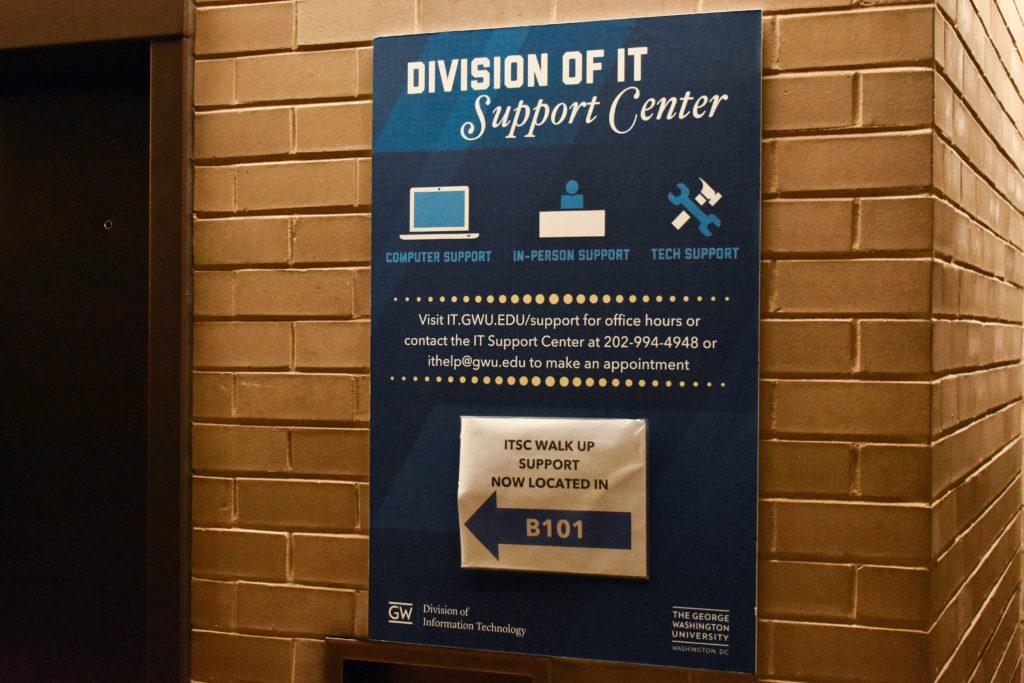A recent survey showed that information technology departments across the country have struggled to retain employees and improve service in the face of long-standing budget cuts – but officials said GW has not been shaken by the nationwide trend.
The Campus Computing Project released the results of its annual IT survey last month and found that IT staff at two thirds of the more than 200 public and private universities surveyed have not recovered from the 2008 recession and still face difficulties hanging on to talented employees and ensuring secure servers. At GW, officials also faced ongoing budget cuts after missed enrollment projections three years ago – but Loretta Early, the chief information officer, said GW has managed to provide quality service and retain most of its employees through financial hardships.
“GW is committed to investing in technology and scalable, sustainable services that directly support both the university mission and academic success,” Early said in an email. “Over the last two fiscal years, the Division of Information Technology (DIT) has continued to maintain funding levels to support these endeavors while also exploring the most cost-effective options moving forward.”
GW downsized its IT department in 2017 when officials closed Tech Commons, the former hub for all IT needs, and moved some services to an online portal and others to the Buff and Blue Technology Center in 2100 Pennsylvania Ave. Former University President Steven Knapp implemented budget cuts after decreased enrollment forced GW to tighten its belt in 2015 and cut staff hours in the IT Support Center.
But in recent months, the division has also developed an online platform for students to submit their technology requests and piloted an online chatbot for students to inquire about technology issues, which experts said could save money and time for the department. Early declined to say how much the budget was for the department in 2018 and 2017 and how budget cuts affected the department.
The Campus Computing survey found that retaining and hiring IT employees was staff’s second-biggest concern, next to data security. Survey participants said on-campus opportunities often are not competitive with jobs in the private sector.
Early said that even though the technology sector faces a higher turnover rate than other industries, the University “has a good retention rate.”
“I believe we’re able to achieve this type of success because professionals who come to work at GW desire to join a diverse campus community which is here to help advance society and work together towards meaningful progress,” she said.
She added that GW offers “outstanding benefits” to employees. She declined to say how many employees in the department are new this academic year.
Information technology experts said IT budgets are scrutinized because technology might seem like an excessive cost in an atmosphere of growing tuition and other expenses.
Kenneth Green, the founding director of the Campus Computing Project, said competitive employment in the private sector could pull potential IT employees away from universities, and budget cuts may limit the University’s ability to compete in the job market with salaries and benefits to retain them.
“It’s a very dynamic job market for technology these days,” he said. “It’s challenging to be competitive, competitive as an employer, as an IT employer.”
GW’s operations department had a five-member team in 2013, but in 2018, the team shrunk to three members. The director of analysis and advisory services and the director of IT architecture services, which were vacant positions in 2013, were removed in 2016 and 2018, respectively, according to the department’s website.
Keith McIntosh, the vice president and chief information officer at the University of Richmond, said while the IT needs of each school differ, most schools typically cut travel and professional development expenses first to save expenses. But if financial times are particularly hard, he said universities can miss out on innovation opportunities and growth for the department by cutting from management staff.
“Hopefully, this isn’t happening, as these are necessities to ensure the college or university can perform its academic and administrative missions,” he said.
Tracy Schroeder, the vice president of information services and technology at Boston University, said IT departments try to circumvent smaller IT budgets by combining sectors and people who do similar tasks under one umbrella.
“What schools are often doing are trying to organize those resources under a central department and make them more efficient and eliminate duplication or redundancy,” Schroeder said.




